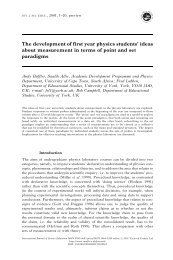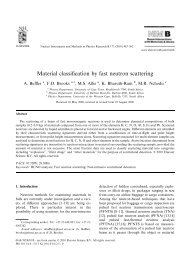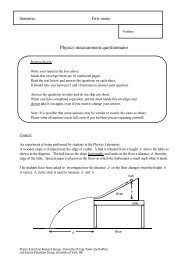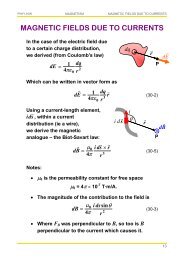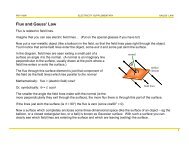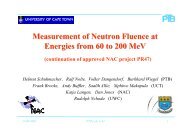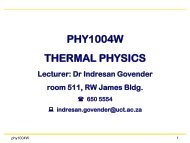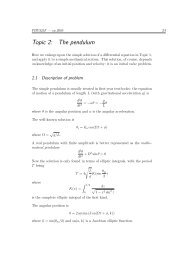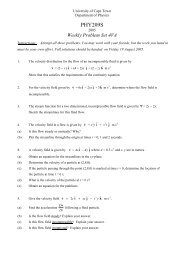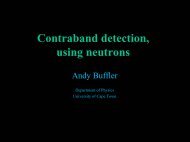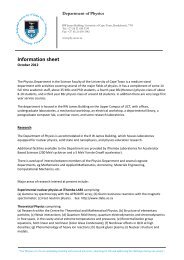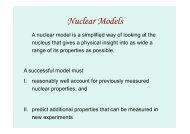INDUCTORS AND INDUCTANCE
INDUCTORS AND INDUCTANCE
INDUCTORS AND INDUCTANCE
Create successful ePaper yourself
Turn your PDF publications into a flip-book with our unique Google optimized e-Paper software.
PHY110W MAGNETISM <strong>INDUCTANCE</strong><br />
RL CIRCUITS<br />
Initially, an inductor acts to oppose changes in the<br />
current through it. A long time later, it acts like<br />
ordinary conducting wire.<br />
Applying Kirchhoff's loop rule to<br />
the adjacent circuit as the<br />
constant emf E is switched on …<br />
E<br />
increasing i<br />
R<br />
L<br />
E L<br />
E<br />
− iR − L di = dt<br />
0<br />
solving which for i we get<br />
i<br />
⎛<br />
=<br />
E<br />
1 −<br />
R<br />
⎜<br />
⎝<br />
e<br />
−Rt L<br />
⎞<br />
⎟<br />
⎠<br />
(31-42)<br />
which can be written as<br />
i<br />
⎛<br />
=<br />
E<br />
−<br />
R ⎜<br />
⎝<br />
−t<br />
τ<br />
L<br />
1 e<br />
⎞<br />
⎟<br />
⎠<br />
(31-43)<br />
where τ L is the inductive time constant (τ L = L / R )<br />
At time t = 0, i = 0. But as t → ∞, i → E / R .<br />
−1<br />
At time t = τ L i =<br />
E<br />
( 1− e ) = 0,63<br />
E .<br />
R<br />
R<br />
Graphically:<br />
i<br />
E<br />
/ R<br />
0.63 E / R<br />
τ L<br />
t<br />
33



